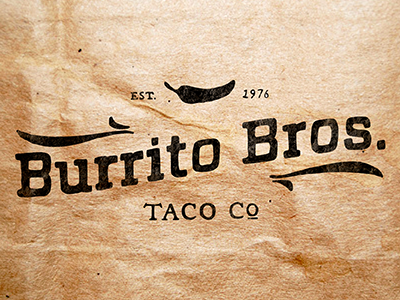Branding and Identity Design: Stand Out from the Crowd
The world of business is more competitive than ever, with countless companies vying for attention and striving to make a lasting impression on consumers. In this crowded marketplace, it is crucial for businesses to develop a strong brand identity that sets them apart from the competition. Branding and identity design offer the tools and strategies to help businesses stand out from the crowd and make a memorable impact on their target market.
The Power of Branding
Branding goes beyond mere logos and symbols; it encompasses the entire perception and experience that consumers have with a company and its products or services. A well-executed branding strategy can create a deep emotional connection with consumers, instill trust, and foster loyalty. Effective branding helps businesses differentiate themselves from their competitors, creating a unique identity that resonates with the target audience.
Brands are more than just a name; they represent a promise to consumers. Behind successful branding are core values, a mission, and a vision that guide the company’s actions and resonate with the desired target market. From the visual elements such as logos, color schemes, and typography to the language used in marketing communications, every aspect of branding should contribute to a cohesive and consistent identity.
Identity Design: Creating Visual Appeal
A vital aspect of branding is identity design, which focuses on creating a visual representation of the brand and its core attributes. Identity design encompasses the development of logos, packaging, signage, websites, and any other visual element that conveys the brand to the world. These visual elements should embody the essence of the brand, creating a distinctive and memorable image that aligns with the company’s values and appeals to the target audience.
HTML Markup Example:
<img src=”logo.png” alt=”Company Logo” class=”logo”>
Logos are the face of a brand, serving as the most recognizable visual element. They should be designed meticulously, taking into consideration colors, symbols, typography, and overall composition. A logo should be versatile enough to work across various platforms, from digital to print media, while maintaining its distinctiveness.
Consistency is critical in identity design. Using consistent fonts, color schemes, and visual elements throughout all communication channels will create a cohesive and harmonious brand image. It ensures that customers can easily connect the visual elements with the brand and reinforces recognition and recall.
Crafting a Memorable Brand Experience
A successful brand not only has a visually appealing identity but also offers a memorable customer experience. Consistency in customer service, product quality, and marketing messages is essential to building a strong brand identity that resonates with consumers. By consistently delivering exceptional experiences, companies can strengthen their brand image and establish trust, leading to customer loyalty and advocacy.
HTML Markup Example:
<div class=”customer-testimonial”>
<h3 class=”testimonial-title”>Customer Testimonial</h3>
<p class=”testimonial-content”>Lorem ipsum dolor sit amet, consectetur adipiscing elit. Aliquam fermentum eleifend maximus. Nulla at congue est, vel laoreet ligula. Nunc velit nisi, lobortis et nunc vitae, posuere bibendum elit. Aliquam fringilla ante vitae urna dapibus.</p>
<p class=”testimonial-author”>- John Doe, satisfied customer</p>
</div>
Creating a brand experience also involves leveraging other sensory elements. The use of sound, smell, or touch can evoke emotions and enhance the brand connection with consumers. For example, a unique jingle or scent associated with a brand can trigger positive memories and associations, helping consumers to recall the brand more easily.
Standing Out in the Digital Age
In today’s digital age, businesses must adapt their branding and identity design strategies to the online realm. With the increasing prevalence of e-commerce, websites and social media platforms play a crucial role in shaping brand identities. The website design should be visually engaging, user-friendly, and mirror the brand’s personality and values.
HTML Markup Example:
<div id=”social-media-links”>
<a href=”#” class=”social-media-icon”><i class=”fa fa-facebook”></i></a>
<a href=”#” class=”social-media-icon”><i class=”fa fa-twitter”></i></a>
<a href=”#” class=”social-media-icon”><i class=”fa fa-instagram”></i></a>
</div>
Utilizing social media platforms can significantly amplify a brand’s reach and engagement. Integrating social media icons and sharing buttons on websites, as shown in the HTML markup above, allows visitors to easily connect with the brand and share their experiences with others. Consistent branding across social media profiles helps maintain a cohesive brand image and enhances recognition.
Additionally, a well-designed and informative blog can provide value to customers while establishing the brand as a thought leader within the industry. It is an opportunity to tell the brand’s story, offer expert advice, and engage with the target market. The blog design should align with the overall brand identity, using consistent colors, typography, and imagery.
The Continuous Evolution of Branding
As consumer preferences and trends evolve, so must branding efforts. To ensure sustained success, businesses need to periodically assess and adapt their brand identity to remain relevant and resonant with the target market. Researching and understanding the target audience, monitoring industry trends, and seeking consumer feedback are crucial in keeping the brand identity fresh and appealing.
The markup below shows an email subscription form:
<form class=”email-subscription-form”>
<input type=”email” name=”email” id=”email-input” placeholder=”Enter your email address” required>
<button type=”submit” class=”subscribe-button”>Subscribe</button>
</form>
By staying ahead of the competition through innovative and differentiated branding and identity design, businesses can establish themselves as market leaders. A strong brand identity that resonates with consumers can lead to increased brand recognition, customer loyalty, and ultimately, greater business success.
HTML markup examples throughout this article have showcased various elements that can be incorporated into websites for effective branding and identity design. Remember, the key is to create a cohesive and consistent brand image that aligns with the company’s values and makes a lasting impact on consumers.


